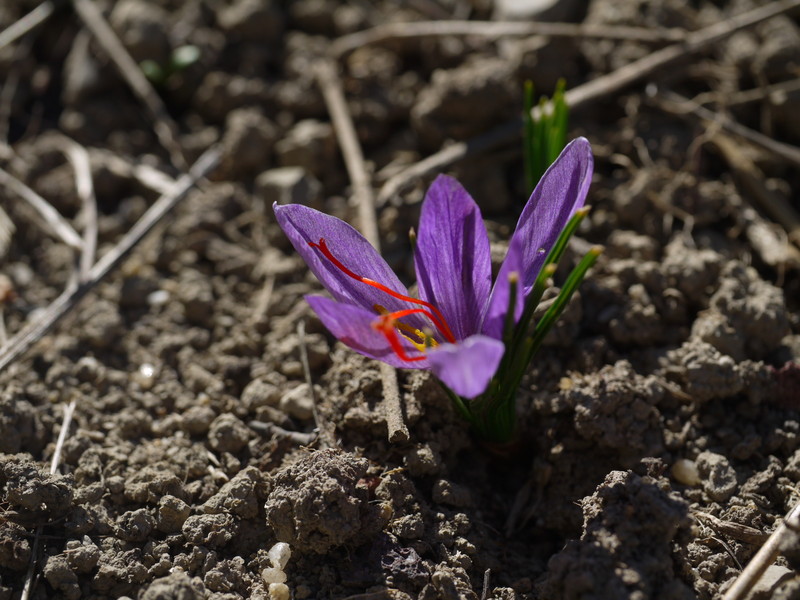Saffron
Crocus sativus L.
Iridaceae
Saffron is a precious and powerful spice, considered as the “king of spices”.
They are small red and very fragrant filaments which are the stigmas of a species of the autumn-flowering crocus, crocus sativus, literally the cultivated crocus.
The exact origin of this plant is unknown, probably a hybrid from wild plants, and in fact does not produce seeds (it is multiplied only by dividing the bulbs).
Saffron cultivation has been documented in India for over 4000 years. Today, production is concentrated in India, Iran, Morocco, Greece, Spain, Italy and … France.
The plant is very well acclimatized in our country and some regions have a very old tradition of saffron cultivation, especially in the southwest.
The flowers are harvested by hand and the precious stigmas that make up the saffron are separated from the petals. It takes almost 200,000 flowers to produce one kilo of saffron, the price of which can reach 30,000 euros (for artisanal saffron produced in France), hence the name of red gold. Fortunately the saffron is very fragrant and 0.02g are enough to flavor a dish and to color it as in the case of paella.
The stigmas have a powerful coloring power, a gram of saffron to color 100 liters of water. The robes of Tibetan monks are traditionally tinted with saffron, which gives them a bright yellow hue, symbol of renunciation and wisdom.
With such a high price, the risks of fraud are numerous: additions of other plants, dyes, glycerine or oil (to increase its weight) … Thus, about 120 tons are produced every year, but you find 300 Tons on the market! This requires numerous checks to ensure the nature and quality of the saffron but also its effectiveness, because saffron is a medicinal plant.
Saffron has many properties: digestive aid, tonic, calming, analgesic. Some studies also show a regulating action on the mood, already known to the doctors from the Middle Ages who said of the plant: “Saffron comforts, it excites the joy”. Saffron acts as a natural antidepressant by the same mechanisms as a synthetic drugs: by acting on serotonin, a molecule produced by the body that regulates the mood.
On top of its tonic action, we understand why saffron is often considered as an aphrodisiac.
Admirable wine
Here is a recipe inspired by a very ancient formula, Vinum mirabile or admirable wine which “being taken from time to time in the dose of a large (about 4g) is extremely beneficial to people of cold temperament”
Clou de girofle 4g
Noix de muscade 4g
Macis 4g
Poivre de Cubèbe 4g
Cardamome 4g
Galanga 4g
Safran 0,4g
Laisser macérer 14 jours dans un litre de vin de bordeaux.
Filtrer
